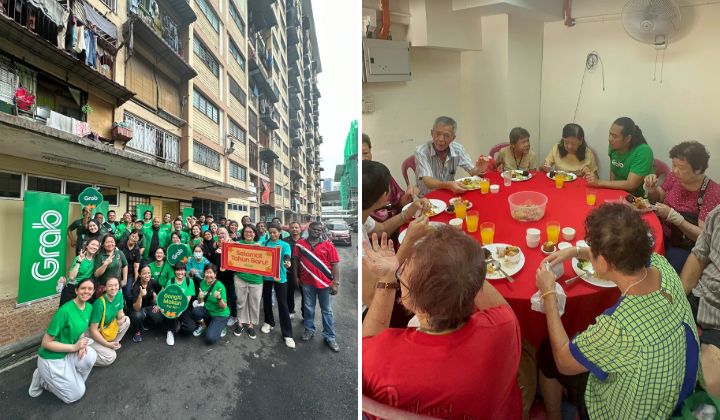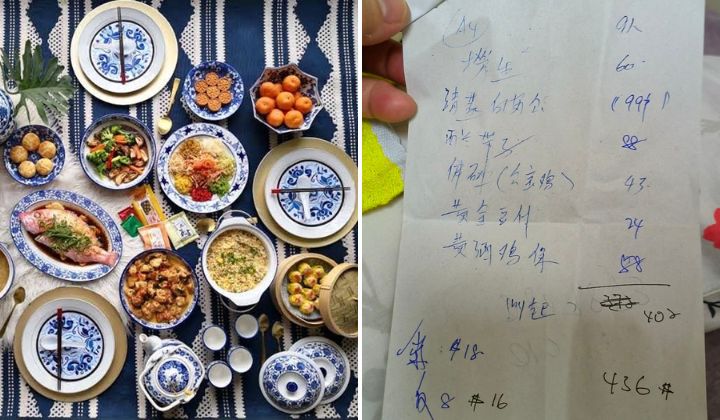Why Is Bak Kwa A Must-Eat During Chinese New Year?
Bak kwa and rougan mean “dried meat” in Hokkien and Mandarin, respectively,

Subscribe to our Telegram channel for the latest stories and updates.
Bak kwa which means dried meat in the Hokkien dialect is among the popular treats for Chinese New Year.
The savoury sweetmeat traditionally takes the form of thin square slices and is usually made from pork.
Bak kwa varies in appearance from brown to red, depending on the colouring additives contained in the meat.
The deep red colour is considered auspicious in Chinese tradition, symbolising good luck and believed to ward off negative energies.
Hence, bak kwa is often presented as gifts to relatives and business associates during the festive season.
Food Heritage
Also known as rougan (肉干), the delicacy originated in Fujian, China.
Chinese immigrants escaping poverty brought bak kwa to the Malay Peninsula as early as the 15th century.
It was reserved as a Chinese New Year treat as the pork was a delicacy not many could afford, especially among the early immigrants, and the tradition remains until today.
The delicacy has since taken on local characteristics where it is grilled over charcoal instead of cooked over a hot plate, as is traditionally done.
The local version is also sweeter than the original.
Today, many bak kwa businesses remain family-run, helmed by the third generation.
Some continue to make bak kwa manually and are getting more popular daily, though some buck the trend.
Fun fact: I don’t buy Bak kwa during the CNY period. They’re more expensive and very often, they’re worse in quality because they’re rushing to fulfil orders
— Gregory Leow (@GregoryLeow) January 12, 2023
So How Is Bak Kwa Made?
There are two types of bak kwa: sliced and minced meat.
Bak kwa’s main ingredients include sugar, fish sauce, spices and meat.
The process includes the following:
- Cutting and trimming away all the fats.
- Grinding it.
- Marinating the meat.
- Roasting the meat.
- Cutting it into smaller pieces
Making bak kwa is very labour-intensive.
A good bak kwa is roasted using charcoal instead of an electric oven, which is more straightforward.
For charcoal roasting, the temperature needs to be about 200 degrees Celsius, and charcoal must be added if the temperature drops.
Changing With The Times
While the traditional background remains widely loved, many new and unique flavours have emerged.
Bak kwa sellers have created new flavours to cater to the younger generation’s ever-curious and adventurous palate.
Mala (famous spicy Szechuan sauce), coffee, lobster, durian, pineapple and even crocodile bak kwa are examples of how bak kwa flavours have evolved.
6 Unconventional Snacks To Get This CNY — Crocodile Meat & Coffee Bak Kwa?! https://t.co/j4pJm5rh3u pic.twitter.com/c7G02IaN5I
— Travel Food Tech TV (@iTravelFoodTech) January 30, 2019
It’s a matter of maintaining a balance between tradition and innovation.
But no matter how the flavours evolve, bak kwa’s sweet barbecue taste and bright red colour have been and will continue to be synonymous with Chinese New Year.
In recent years, pork-free bak kwa made from chicken or beef has been gaining popularity among Malays.
BAKKWA HALALL ! 😭😭❤️❤️ https://t.co/Dzf0NCTRTF
— dibakk (@dbashasha) January 13, 2023
Why Is Bak Kwa So Expensive?
There is usually not much business for bak kwa sellers except when Chinese New Year is around the corner.
Hence, sustaining a bak kwa business is difficult, and consumers have no choice but to buy it during peak season, even at a higher price.
Bak kwa can only be kept for a short time, and most of the time, must be consumed within a month of purchase.
In the past, people usually give biscuits as presents during Chinese New Year instead of bak kwa.
Nowadays, friends and relatives exchange bak kwa as a small token of appreciation, adding to the rising demand.
It is not unusual for people to queue up for a long time to get their favourite bak kwa, especially in neighbouring Singapore.
“@kennysia: SINGAPOREANS. Y u queue up long long to buy bak kwa during office hours? No need to work is it!? pic.twitter.com/H9IFHDJI”
— Jack Yee Tan (@JackYeeTan) January 12, 2012
Share your thoughts with us via TRP’s Facebook, Twitter, and Instagram.





